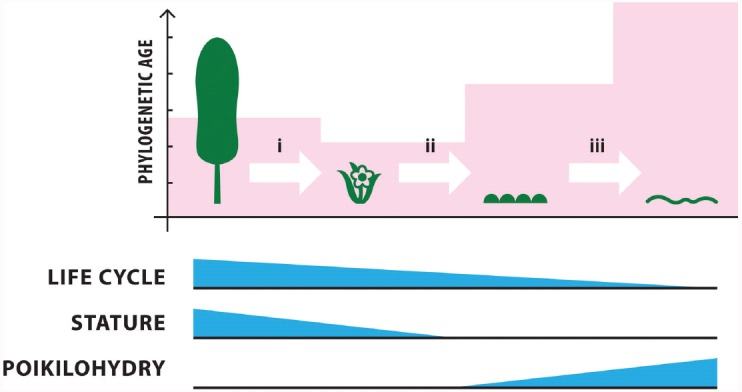FIGURE 4.

Key biotic drivers for transition between polar photoautotrophic groups. The relative influence of life cycle, stature and poikilohydry are shown by the extent of blue triangles (taller shading = greater influence). (i) Macroclimatic conditions largely drive the transition from trees to low stature shrubs via aerodynamic coupling of the tall stature of trees. Whilst trees are exposed to ambient air temperature, shrubs can more easily decouple from atmospheric conditions due to their low stature (Körner, 2012a). (ii) The transition from low stature shrubs to cryptogams is driven by via ontogeny barriers (Pannewitz et al., 2003; Green et al., 2011; Körner, 2011). (iii) Microclimate drives the presence/absence of most higher plants through exposure (radiative heat) and wind, whilst water mostly drives the transition from higher cryptogams (mosses) to highly poikilohydric unicellular plants (cyanobacteria, Potts, 1999). Phylogenetic age correlates well with tolerance of extreme conditions and relative phylogenetic age is shown by the pink shading (taller shading = older lineage).
